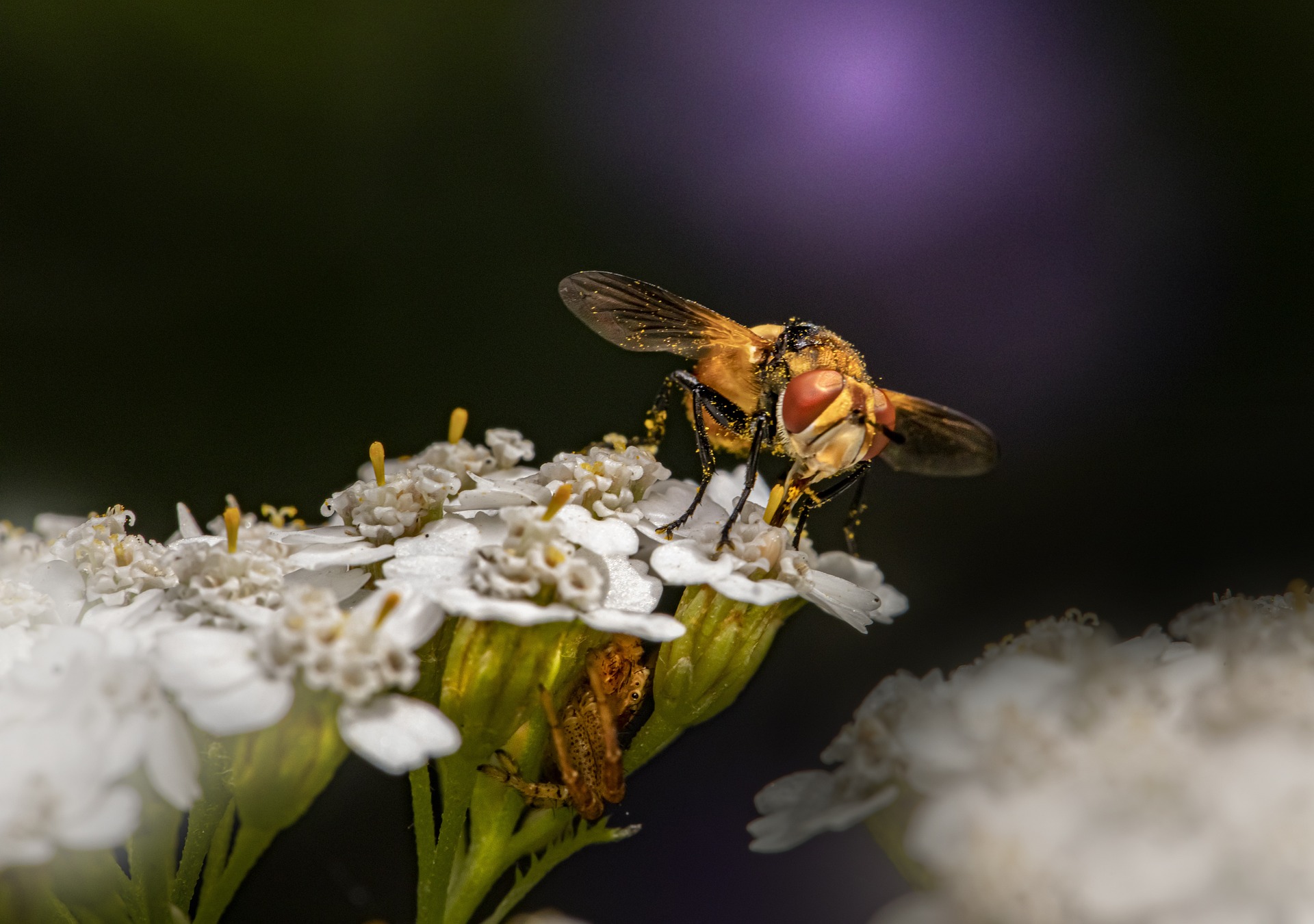The Ladybird Fly (Gymnosoma rotundatum) is a species of parasitic fly belonging to the family Tachinidae. These flies are named for their round, often brightly colored bodies which can resemble those of ladybirds (ladybugs). Here are some detailed characteristics and information about the Ladybird Fly:
Appearance
- Size: Ladybird flies are relatively small, typically measuring around 4 to 8 millimeters in length.
- Coloration: They have a distinctive appearance with a rounded, bulbous abdomen that is often brightly colored, typically red or orange with black spots, resembling ladybirds. Their thorax is usually grey with black stripes.
- Wings: The wings are clear and can be folded back over the body when at rest.
- Antennae: They have short, three-segmented antennae typical of flies.
Habitat
- Preferred Habitats: Ladybird flies are commonly found in various habitats, including meadows, gardens, forests, and fields. They are often seen on flowers, where they feed on nectar.
- Geographic Range: Gymnosoma rotundatum is found across much of Europe and parts of Asia. Their range includes temperate regions where they can find suitable hosts for their larvae.
Behavior
- Parasitic Lifestyle: Ladybird flies are parasitoids, meaning their larvae develop inside a host organism, ultimately leading to the host’s death. They primarily parasitize true bugs, especially stink bugs (Pentatomidae).
- Adult Diet: As adults, ladybird flies feed on nectar, pollen, and other plant fluids. They are often seen visiting flowers.
- Reproduction: Females lay their eggs on or near the host insect. When the larvae hatch, they penetrate the host’s body and develop inside, feeding on the host’s internal tissues.
Life Cycle
- Eggs: Female flies lay their eggs directly on or near the host insect.
- Larvae: The larvae enter the host and consume it from the inside. This parasitic stage lasts until the larvae are ready to pupate.
- Pupation: Once fully developed, the larvae leave the host to pupate in the soil or other sheltered locations.
- Adults: After pupation, adult flies emerge to continue the cycle. The entire life cycle is closely linked to the availability of suitable hosts.
Ecological Role
- Natural Pest Control: By parasitizing true bugs, ladybird flies help control the populations of these insects, some of which are agricultural pests. This makes them beneficial in natural and agricultural ecosystems.
Identification Tips
- Shape and Color: The rounded abdomen and bright coloration with black spots are key features that help in identifying Gymnosoma rotundatum. The resemblance to ladybirds is a distinctive characteristic.
- Behavior: Observing their behavior, such as visiting flowers for nectar and their interactions with potential host insects, can aid in identification.
Conservation Status
- Population: The conservation status of Gymnosoma rotundatum is generally stable, though specific population trends are not well-documented. They are not considered endangered or threatened.
- Threats: Habitat loss and the use of pesticides can impact their populations by reducing the availability of hosts and suitable environments.
Interesting Facts
- Mimicry: The resemblance to ladybirds may provide some protection from predators, as many predators avoid eating ladybirds due to their toxic chemicals.
- Parasitic Strategy: The parasitic strategy of ladybird flies is an interesting example of biological control in nature, as they help keep the populations of their host insects in check.
In summary, the Ladybird Fly (Gymnosoma rotundatum) is a distinctive parasitic fly known for its bright coloration and round body that resembles ladybirds. Found across much of Europe and parts of Asia, these flies play a beneficial role in controlling pest insect populations and can be commonly seen visiting flowers for nectar.
Visited 374 times, 10 visit(s) today
Views: 396
Subscribe to the newsletter:
